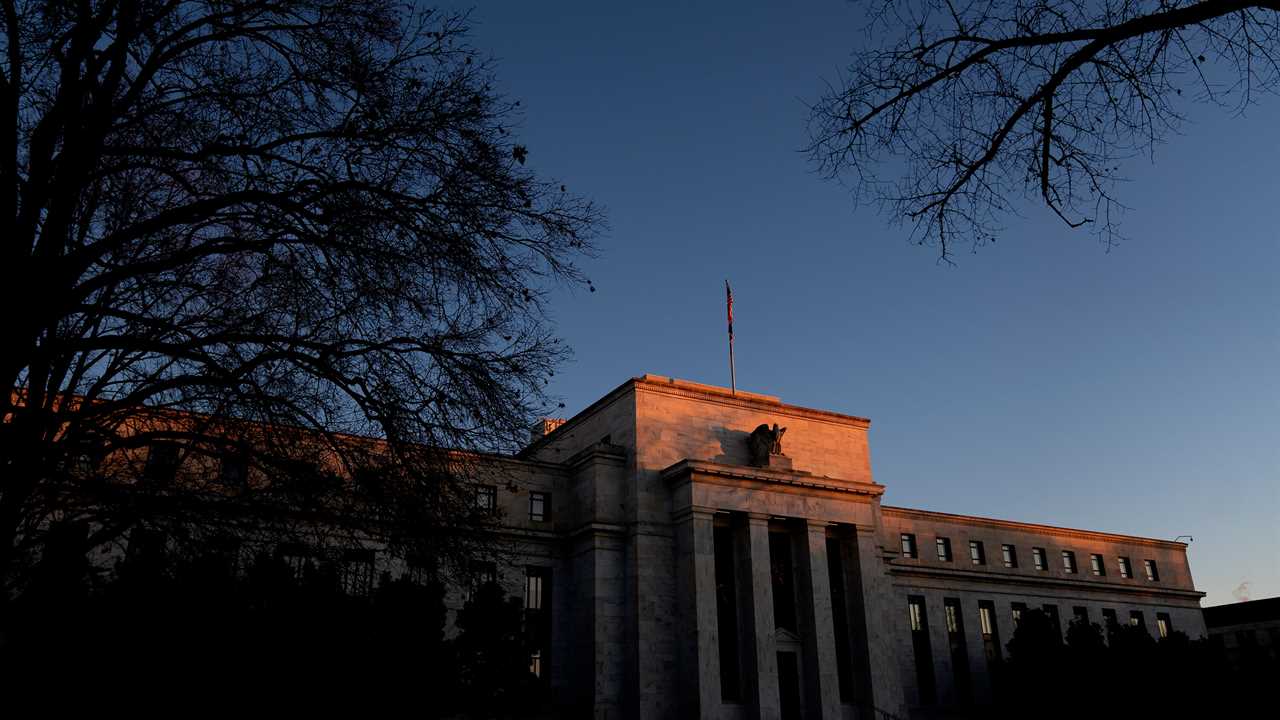
The Federal Reserve on Wednesday said it would “soon” be appropriate to raise interest rates, as inflation runs above policymakers’ preferred target and the job market strengthens.While central bankers left rates unchanged at near-zero — where they have been set since March 2020 — the revised statement after their two-day policy meeting laid the groundwork for higher borrowing costs as soon as the Fed’s next meeting in March.The Fed is already slowing a bond-buying program it had been using to bolster the economy, and officials left that program on track to end in March. Central bankers have signaled that they could begin to shrink their balance sheet of government-backed debt soon after they begin to raise interest rates, a move that would further remove support from markets and the economy. The Fed’s policy committee released a statement of principles for that process on Wednesday, pledging to shrink its holdings “in a predictable manner” and “primarily” by adjusting how much it is reinvesting as assets expire.Jerome H. Powell, the Fed chair, is scheduled to hold a news conference starting at 2:30 p.m.Investors are nervously eyeing the Fed’s next steps, worried that its policy changes will hurt stock and other asset prices and rapidly slow down the economy. At the same time, consumer prices are rising at the fastest pace since 1982, eating away at household paychecks and posing a political liability for President Biden and Democrats. It is the Fed’s job to keep inflation under control and to help foster full employment.Understand Inflation in the U.S.
Inflation 101: What is inflation, why is it up and whom does it hurt? Our guide explains it all.Your Questions, Answered We asked readers to send questions about inflation. Top experts and economists weighed in.What’s to Blame Did the stimulus cause prices to rise? Or did pandemic lockdowns and shortages lead to inflation? A debate is heating up in Washington.Supply Chain’s Role A key factor in rising inflation is the continuing turmoil in the global supply chain. Here’s how the crisis unfolded.The Fed’s withdrawal of policy support could cool off consumer and corporate demand as borrowing money to buy a car, a boat, a house or a business becomes more expensive. Slower demand could give strained supply chains room to catch up. By slowing down hiring, the Fed’s moves could also limit wage growth that might otherwise feed into prices.“With inflation well above 2 percent and a strong labor market, the committee expects it will soon be appropriate to raise the target range for the federal funds rate,” the Fed said in its statement.The Fed has pivoted away from providing full-blast support as the economy rebounds strongly from its pandemic shock, and the new signal of an impending rate increase is the latest step in that process.“They’re reinforcing market expectations of a March liftoff,” said Priya Misra, head of global rates strategy at TD Securities. Ms. Misra said she viewed the Fed’s release of how it would approach reducing its balance sheet as a sign that the central bank could begin that next step in pulling back support very soon, perhaps after the central bank increases rates once or twice. “They are trying, I think, to reduce market uncertainty around the balance sheet — but they’re telling us it’s happening,” she said. The unemployment rate has fallen to 3.9 percent, down from its peak of 14.7 percent at the worst economic point in the pandemic and near its February 2020 level of 3.5 percent. Wages are growing at the fastest pace in decades, though they are struggling to keep up with rapid price increases.Inflation picked up sharply in 2021 and is likely to remain uncomfortably high well into 2022. The Fed’s preferred inflation gauge is expected to show that prices picked up by 5.8 percent in the year through December when the latest report is released on Friday, more than double the 2 percent pace the Fed aims for annually and on average.Prices are high partly because global supply chains are struggling to produce and transport enough couches, cars and clothing to keep pace with booming demand for goods. The pandemic had changed consumption patterns, and households have money in their pockets thanks to long months at home and government relief.Inflation F.A.Q.
Card 1 of 6What is inflation?Inflation is a loss of purchasing power over time, meaning your dollar will not go as far tomorrow as it did today. It is typically expressed as the annual change in prices for everyday goods and services such as food, furniture, apparel, transportation and toys.What causes inflation?It can be the result of rising consumer demand. But inflation can also rise and fall based on developments that have little to do with economic conditions, such as limited oilBy: Jeanna Smialek
Title: Fed, Citing High Inflation and Strong Job Market, Signals Rate Increase ‘Soon’
Sourced From: www.nytimes.com/2022/01/26/business/economy/fed-interest-rates-inflation.html
Published Date: Wed, 26 Jan 2022 19:17:47 +0000
Read More
 UK PoliticsWorld PoliticsVideosPrivacy PolicyTerms And Conditions
UK PoliticsWorld PoliticsVideosPrivacy PolicyTerms And Conditions
